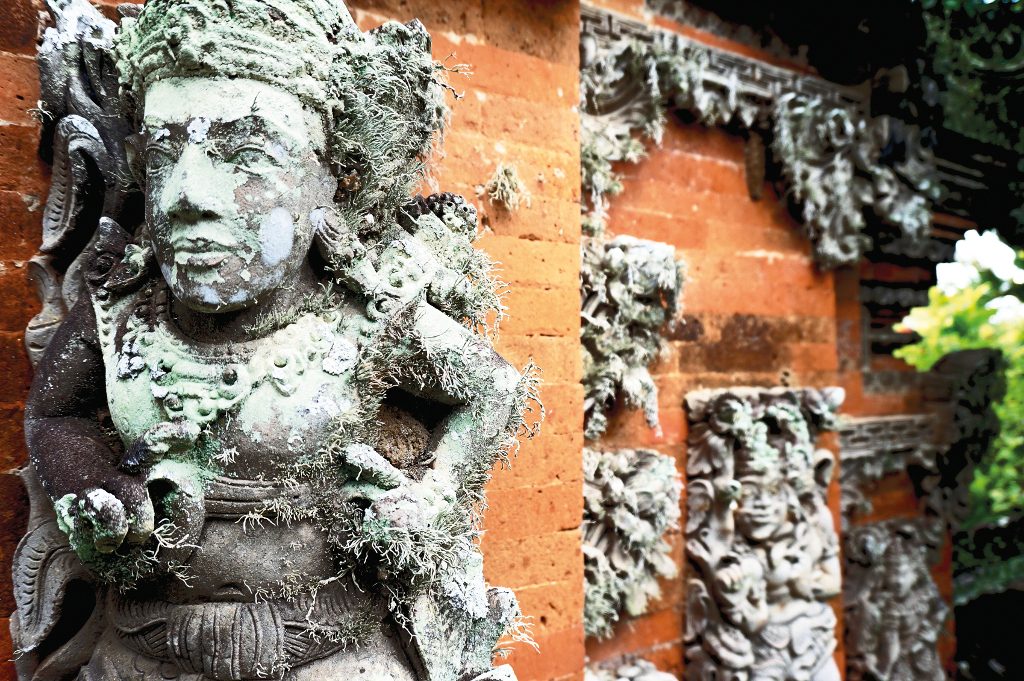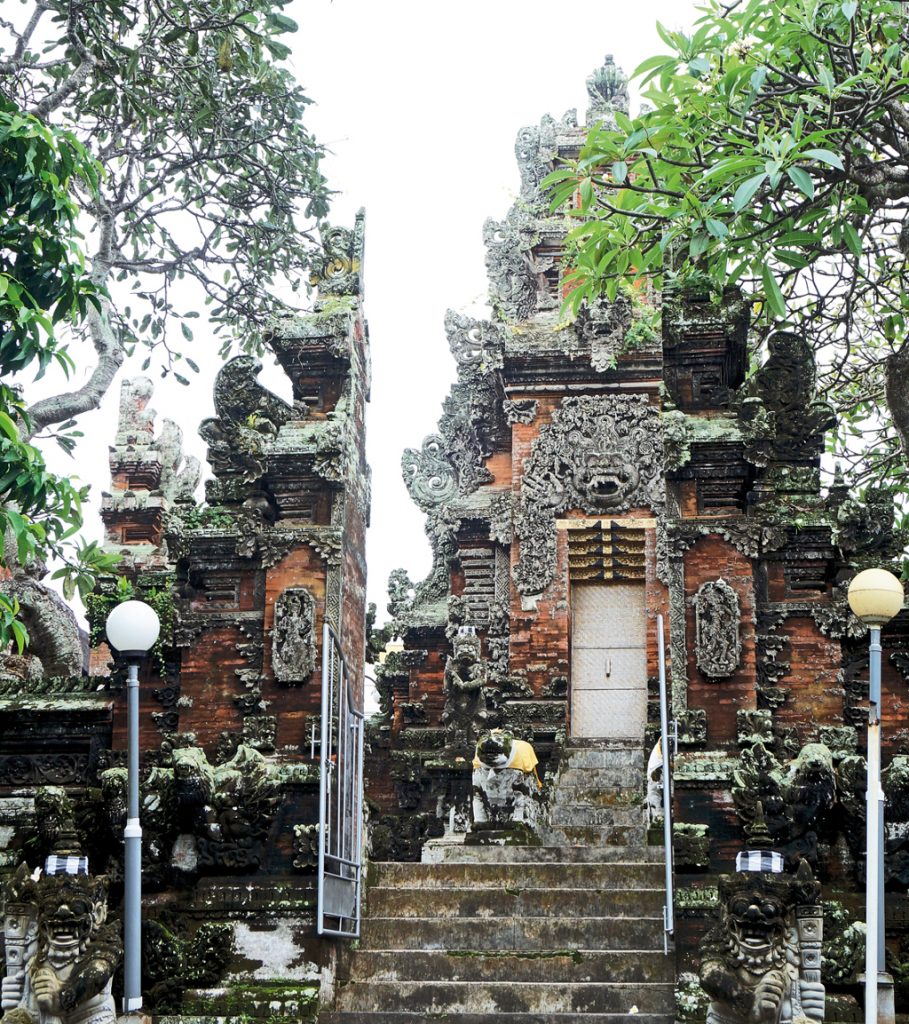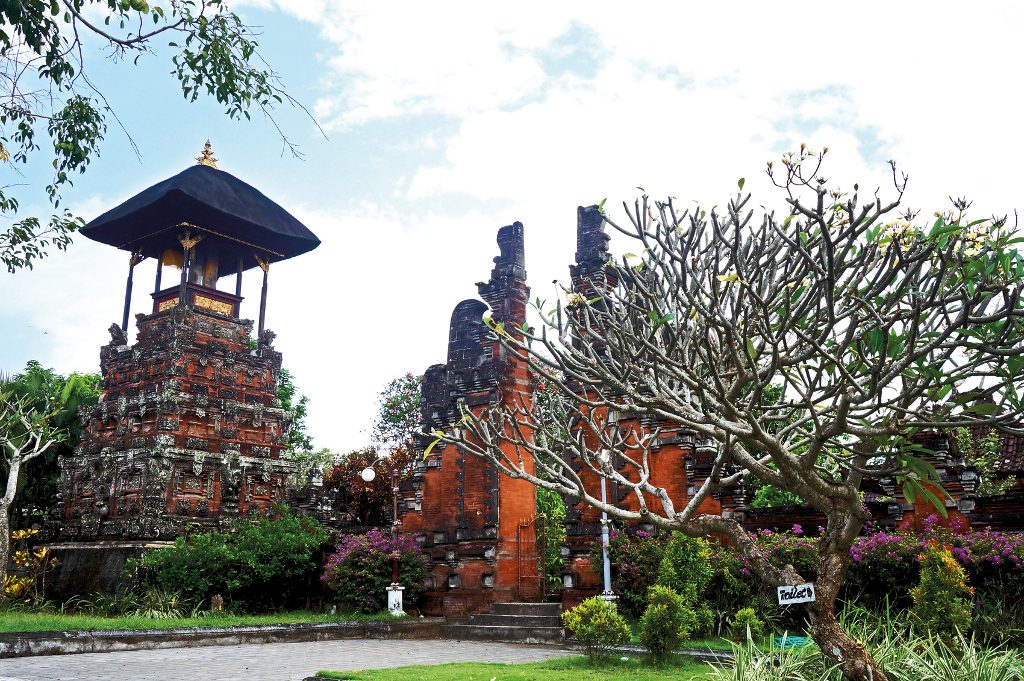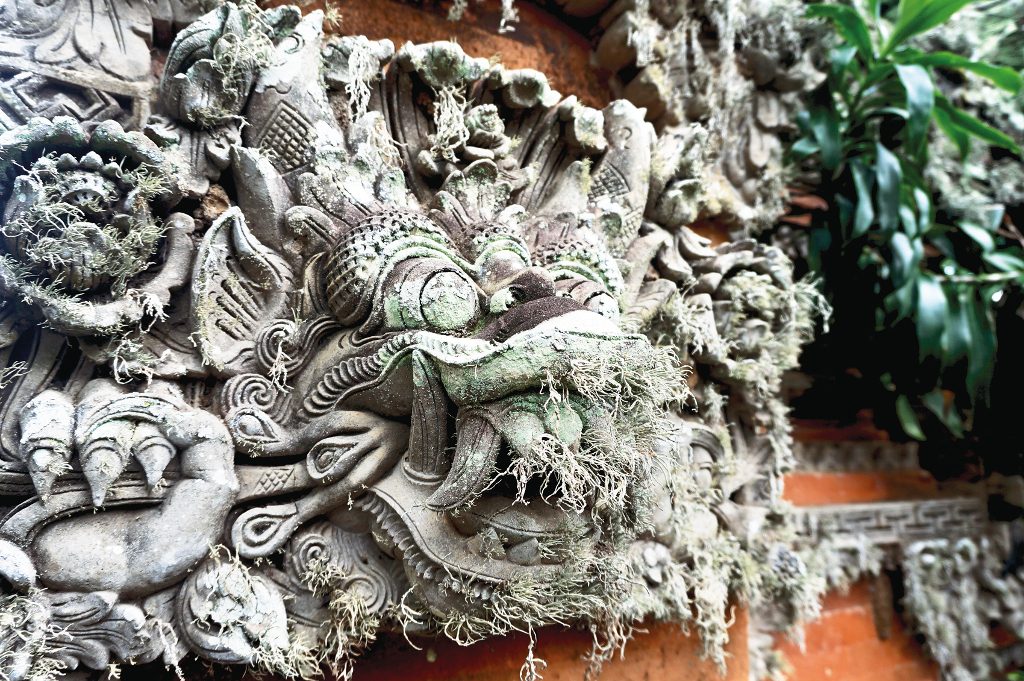Dang Hyang Nirartha stumbled upon this temple during his pilgrimage journey in the mid-sixteenth century. The temple was ruined, so Nirartha took a lock of his hair to fix it.

The biggest temple in the Jembrana regency, Pura Rambut Siwi, occupies the West coastal area with majestic grandeur of Balinese architecture and a captivating ocean backdrop. The temple was already built by the time the Javanese Hindu priest Dang Hyang Nirartha stumbled upon it in his travels during the mid-sixteenth century. Nirartha stopped here to pray one afternoon and he quickly entered into a deep state of meditation. During his meditative prayers, the walls began shaking. They continued shaking harder and harder, until the entire temple complex collapsed around him. The temple was in total ruins and the unruffled Nirartha sat in the middle of the shambles, unscathed.

The guard who had been charged with the responsibility of protecting the temple naturally went berserk; he cried and trembled in fear at the obviously astounding power of Nirartha and he implored Nirartha to restore the temple to its original condition lest the guard be blamed.
Nirartha agreed to restore the temple to its original condition. He gave a lock of his hair to the guard and told him to plant it in the centre of the temple grounds and then pray that the temple would be restored and that the restored temple would be much stronger than the original one.
The guard did as he was instructed. He dug a small hole in the centre of the temple grounds, planted Nirartha’s hair in it, covered it with fresh dirt, patted it flat, then began to pray. Much to his surprise (and relief!) during his prayers the temple walls began to grow up and out of the small pile of dirt covering Nirartha’s buried lock of hair. The walls kept creeping out of the hole and assuming their original position until the entire temple complex was totally restored. And that’s how it remains to this very day, exactly as Nirartha promised, virtually untouched by the ravages of time.

It is also known that Nirartha left the lock of his hair in the temple to give protection for the villagers who were then struck by an unknown disease. This is why Rambut Siwi is known as the go-to temple for those praying for protection.
Pura Rambut Siwi is named as such because rambut means ‘hair’. this temple is in Yeh Embang Kangin village in Mendoyo district, approximately ten kilometres from the town of Negara, capital of the Jembrana regency. It sits at a beautiful location, directly on the edge of a cliff overlooking the sea. The temple is finely built from that typical Balinese red brick with exquisite paras reliefs depicting scenes from the ancient play “Arjuna Wiwaha”.
Near the rear of the property is a steep set of steps leading down from the main temple area to a small prayer grotto nearer sea level. A particularly good sculpture of Rangda stands guard in the gateway facing the sea. Down on the beach there are several cave temples, with one bearing a sacred spring. Perfect for meditating, this is a lovely site well worth visiting, for the temple offers a calm, peaceful and tranquil oasis.

Pura Rambut Siwi has undergone several renovations, most significantly with the relocation of the temple to the peak of the hill. Visitors can enjoy the natural beauty that surrounds the temple’s compound. Vast, terraced rice fields envelope the southern part. On the north side, you can see villages and mountains that line from west to the east. In the south, you can see the Indian Ocean, while to the southwest of the temple there is a place to rest while enjoying the beauty of the sea view with the relaxing sounds of the waves. Yet, despite its importance and beautiful setting, this temple remains unknown to the millions visiting Bali. So the next time you’re traveling to the west via the Gilimanuk road, make sure to make a stop here.






